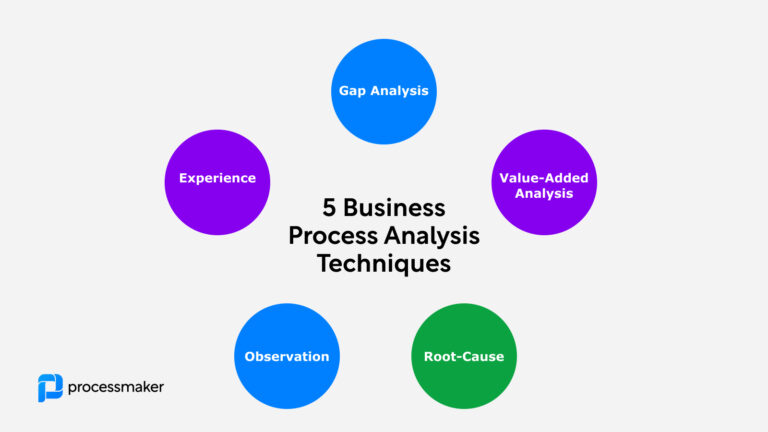At ProcessMaker, and the BPM industry as a whole, we are living process automation. Every day, our team is constantly thinking about business process solutions in a variety of industries and how to best adapt BPM concepts to be useful and easily accessible to the end-user. Outside of the BPM industry bubble, our users (you!) might interact with the software simply to complete your daily tasks and then leave your offices to go on with your life. However, your experience with processes does not end when you go through the office door at the end of the day. The concept of the process is ubiquitous, and workflow patterns are related to almost everything we do.
What’s a process?
Most definitions of processes read something like “a series of actions or steps taken in order to achieve a particular end”. This definition is generic and could be applied to almost anything, for example, a bee that’s collecting pollen from a flower and comes back to the swarm, a kid that is going to the school and takes the school bus to get there, buying all the groceries on a grocery list, or a line of people trying to get their favorite coffee in the morning. All of these examples fit the definition of a process since they all include a series of actions or steps carried out in a sequence to complete a goal.
Now think, what would happen if you change the order of any of the steps needed to complete the goal? In some of the examples mentioned above, the order matters: you cannot get your favorite coffee in the morning if you don’t go to the line first, or the bee cannot come back to the swarm to make honey if it doesn’t collect the pollen, right? On the other hand, when buying the items on a grocery list, the order in which they are put into the shopping cart is irrelevant as long as all the items are purchased.
Some processes happen once and others multiple times. Naming a new family member happens once for parents, but in the same family, the process of buying milk or cereal happens multiple times. In the context of a gym or spa, assigning memberships to new members also happens many times. Here, there are two concepts to keep in mind: context and recurrency. Both concepts, in combination with the concept of order, can help us understand processes more easily.
Order, Context and Recurrency
Right now, the concepts of order, context, and recurrency are vague. Processes can be classified with any possible combination of the three; simple enough, right? But when those of us in the BPM industry is on the field to try to express a particular scenario, it is not so easy. Companies spend a lot of money on process research and discovery, and they will continue doing so because finding the right process is like finding the holy grail. Every process defined needs to pass through the 4 steps in the workflow creation cycle: definition, execution, maintenance, and improvement. But this is too technical, so what more straight-forward steps could we use to define any kind of process?
Step 1. Define the Context
This step defines the circumstances under which the process will happen. Defining the circumstance is integral to the entire process creation cycle since the circumstances determine the stakeholders and tasks in the process, which are different for every context. For example, if you want to define a process to buy presents for Christmas, the process will be defined differently as you make decisions about the target group that will receive the presents, who might be your family and relatives or your customers and partners. Having a clear context will help determine and visualize the next step.
Step 2. Define the Order of the Actions or Steps
Once you have defined the context, you should visualize the process as a sequential list of actions. Everything should be listed and ordered, like the recipe to bake your favorite chocolate muffins or preparing pasta following the instructions on the side of the box. Producing a list of steps/actions in a defined order is enough to complete the process workflow.
Step 3. Define the Recurrency of the Actions Defined Previously
At this point, you should have a context and a sequential list of defined actions. Now, it’s time to ask yourself how many times this list of actions happens based on your context. The answer could be once or several times. Notice that the recurrency is directly related to the order of the steps defined, if the order of the previous steps matters, and the desired outcome of the process. Usually, if the sequence of tasks in a process does not matter (as in our grocery list example), then the rate of recurrence is high for that process. If the order of tasks is important, like renewing your gym membership once a year before being able to use the equipment, then generally the rate of recurrence is low.
Why Do We Need to Define Processes?
For many of us, defining a process is part of understanding how things work. Having comprehensive documentation, a map or blueprint of a process is the best way to prepare to improve your process in the future and get closer to your holy grail. When companies are searching for a process to automate, following the steps mentioned above is critical. Finding processes that are both highly ordered and highly recurrent is key to finding their own holy grail of automated workflows.
Another aspect to keep in mind is that defined processes should be clear enough for others to follow and use, no matter if it happens once or many times, or what context it was defined in. For companies designing processes, this means that every employee who needs to use the process to automate their assigned tasks has to understand the process at a glance.
How Can Processes Help Us Every Day?
Knowing how certain processes are structured helps us better understand the world, especially when the processes are highly recurrent and clearly ordered. Try to imagine a world where no one knows which steps need to be followed to pay your gas bill, or a world without a process to order your pizza? Sounds chaotic, doesn’t it?
Processes are part of the structure of modern society, even when you are not automating your processes using BPM software. Whether we know it or not, we are following a type of workflow whenever we go to the grocery store, whenever a bee goes back to its hive, or whenever waiting in line to get your coffee. Even though it is currently not possible to automate all of the processes you use in your daily life, we are coming closer to that ideal starting in the workplace. Automated processes help minimize the use of resources like paper, free up more time to complete more satisfying and valuable tasks, and make the improvement cycle more reliable and efficient. Process automation helps us reduce busywork and increase efficiency, saving us the energy to do the things that matter every day, both in and out of the office.
Start creating your processes using the concepts discussed in this article today by downloading a free trial of ProcessMaker.





